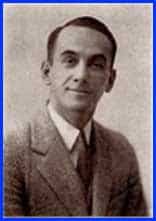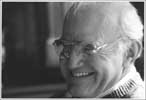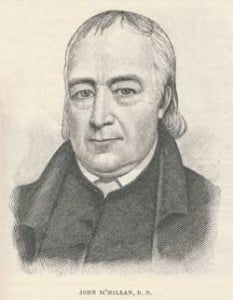 These were tumultuous times in the history of the church, and in the midst of them Brumbaugh moved to Tacoma to become the pastor of the First Presbyterian Church. He was forty-one years old and had a wife and four children. The First Presbyterian Church of Tacoma boasted a formal membership of 1,850, with about 1,000 attending regularly; it was one of the largest in the denomination on the West Coast. The church edifice was a grand structure, and the church was organized with programs for everyone. The church had been without a pastor for a year, and there were some strong elders on the session of the church who were in charge of the program. One of the foremost programs of the church was the Scofield Bible Study classes conducted by the elders. Dr. Brumbaugh came to Tacoma by car from Philadelphia, which was an exciting trip at that time. During most of the trip, his son Roy stood in the front passenger compartment with his hand on the top of the windshield. The issues that were present on the East Coast were also present on the West Coast to some degree.
These were tumultuous times in the history of the church, and in the midst of them Brumbaugh moved to Tacoma to become the pastor of the First Presbyterian Church. He was forty-one years old and had a wife and four children. The First Presbyterian Church of Tacoma boasted a formal membership of 1,850, with about 1,000 attending regularly; it was one of the largest in the denomination on the West Coast. The church edifice was a grand structure, and the church was organized with programs for everyone. The church had been without a pastor for a year, and there were some strong elders on the session of the church who were in charge of the program. One of the foremost programs of the church was the Scofield Bible Study classes conducted by the elders. Dr. Brumbaugh came to Tacoma by car from Philadelphia, which was an exciting trip at that time. During most of the trip, his son Roy stood in the front passenger compartment with his hand on the top of the windshield. The issues that were present on the East Coast were also present on the West Coast to some degree.
The Independent Board for Presbyterian Foreign Missions (IBPFM) was formally organized on October 17,1933, and the Rev. J. Gresham Machen was elected as its first president. As new revelations continued to appear pertaining to the modernism in the Board of Foreign Mission, more and more people converted over to support of the IBPFM. This support of the new board worried the denomination so that it became a major issue at the next general assembly held in Cleveland, Ohio, in May 1934. That general assembly adopted a deliverance that stated that every member of the church is required by the constitution to support the missionary program of the church in the way that each member must take part in the Lord’s Supper. Each Presbytery was mandated to take action against its members who were also members of the IBPFM. The deliverance became known as “The Mandate” and the consequences of it would play out over the course of the next year. Finally the controversy that had simmered for more than a decade was going to be decided in the church courts.
Back in Tacoma, the First Presbyterian Church prospered in many respects, and Brumbaugh, the evangelist, preached the gospel, and many people made professions of faith. However, there was an undercurrent of dissension in the local church that was a microcosm of the denominational controversy. In the local church there was a group of elders who had their plan for the church and a strong pastor who had his plan. As the controversy intensified nationally, it intensified locally and small differences that might have been overlooked in a more peaceable climate became big issues. The lines of demarcation were established and it became apparent that there would eventually be a showdown. It took over a year for the Mandate to trickle down to the local level. It was the presbyteries that were instructed to implement the mandate and there were periods of notification in accordance with the Book of Discipline, and procedures that carried over till the summer and fall of 1935. All the while, sides were taken in the First Presbyterian Church and it was a difficult time to carry on the work of the church. If Brumbaugh left the church, he would lose the building, his pension, the prestige of being pastor to one of the largest churches in the denomination, and other attendant privileges.
In spite of all of this, on August 21, 1935, Brumbaugh informed the denomination of his withdrawal from the PCUSA. Finally he was free. On Thursday night, August 22, 1935, the first meeting of the First Independent Church of Tacoma was held with over 700 in attendance. Ironically, the only facility available to accommodate the new church was a Scottish Rites Temple, right across the alley from the First Presbyterian Church. A new church had begun, fresh and free from denominational control. It was a wonderful feeling of excitement and expectation. As the different presbyteries dealt with other members of the Independent Board, many were suspended, some were admonished or rebuked; and one presbytery, the Presbytery of Chester, refused to take action against the Rev. Wilbur M. Smith, who had followed Brumbaugh at the Coatesville Presbyterian Church. Brumbaugh was tried in absentia and suspended from the PCUSA. On March 29, 1935, Dr. J. Gresham was declared guilty in a sham of a trial and suspended from the ministry of the PCUSA. A sad chapter in Presbyterian church history had come to an end. The same church that had suspended Dr. Charles A. Briggs for heresy in 1893, had, in 1935, suspended Dr. J. Gresham Machen from its ministry for his FAITHFUL ADHERANCE TO THE WORD OF GOD.
Dr. Roy T. Brumbaugh continued on as Pastor of the Tacoma Bible Presbyterian Church until his death on January 3, 1957. The last twenty years of that ministry, although not without controversy, saw an active, enthusiastic, evangelistic church, with a special emphasis on the military personnel from the local military bases.






